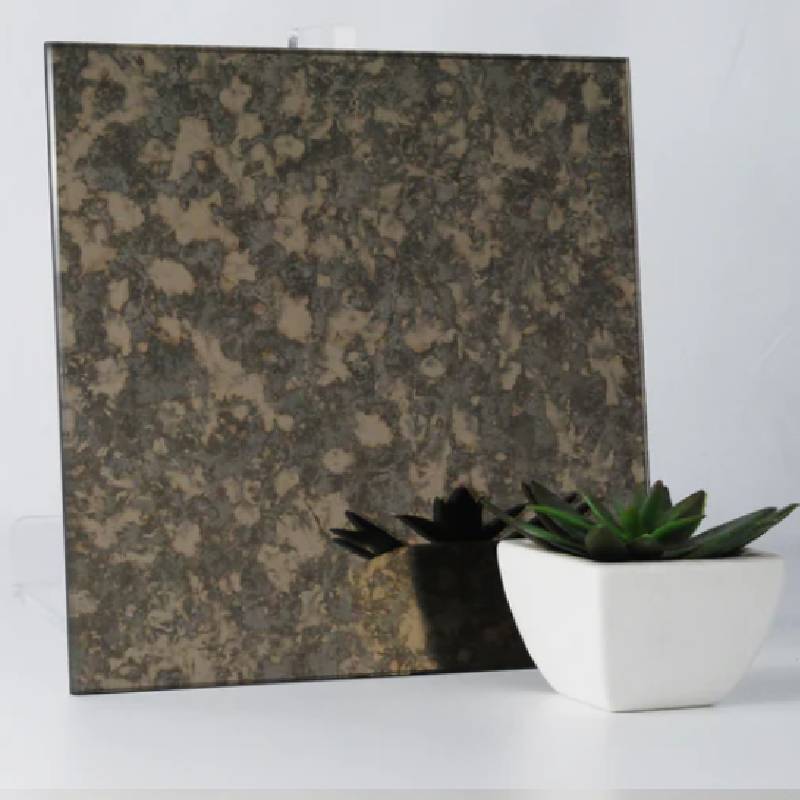The World of Plate Glass Mirrors
Mirrors have been an essential part of human life for centuries. They reflect not only our images but also our culture, advancements, and daily routines. Among the various types of mirrors, plate glass mirrors are particularly noteworthy for their widespread use and unique manufacturing process. This article explores the history, production methods, applications, and future of plate glass mirrors.
A Brief History
The use of reflective surfaces dates back to ancient civilizations. The earliest mirrors were made from polished stones like obsidian or metals such as bronze and silver. However, these materials had their limitations in terms of clarity and durability. It wasn't until the production of glass mirrors began in the Middle Ages that a more efficient and effective reflective surface came into play.
The introduction of plate glass mirrors in the 17th century revolutionized the way mirrors were manufactured. The technique involved creating a flat sheet of glass and then applying a thin layer of metal, typically silver or aluminum, on the back to enhance reflectivity. This innovation not only improved the quality of mirrors but also increased their availability and affordability.
Manufacturing Process
The manufacturing of plate glass mirrors involves several key processes. First, high-quality float glass is produced using the float glass method, which creates a smooth and uniform surface. This involves melting silica, soda ash, and limestone together at a high temperature to form molten glass. The molten glass is then floated on top of molten tin, producing a flat, even sheet.
Once the glass is formed, it undergoes a careful polishing process. This step is crucial for ensuring that any imperfections are removed and that the surface is perfectly smooth. After polishing, the glass is coated with a thin layer of metal to create the reflective surface. Modern techniques often use a layer of aluminum for its durability and resistance to corrosion.
Finally, the glass is sealed and may be framed or back-coated to enhance its longevity. Quality control measures are critical throughout this process to ensure that the mirrors meet the required standards for clarity and reflectiveness.
Applications of Plate Glass Mirrors
plate glass mirrors
Plate glass mirrors have a multitude of applications in everyday life. They are commonly used in homes as bathroom mirrors, dressing mirrors, and decorative pieces. Their reflective quality adds depth and brightness to any room, making them a staple in interior design.
In addition to residential use, plate glass mirrors are essential in the automotive industry
. Rearview mirrors and side mirrors are often made from this type of glass, providing drivers with vital visibility while enhancing the overall design of vehicles.
Furthermore, plate glass mirrors play a pivotal role in commercial settings. Retail stores use them for displays and to create a more spacious atmosphere. Gyms and fitness studios install large plate glass mirrors to help individuals monitor their postures and forms during workouts.
Additionally, scientific laboratories utilize specialized plate glass mirrors in optical instruments, telescopes, and laser systems. These mirrors are designed to deliver high precision and minimal distortion, making them integral to various research areas.
The Future of Plate Glass Mirrors
As technology continues to evolve, so does the manufacturing and application of plate glass mirrors. Innovations in coating techniques and materials may lead to more durable and efficient mirrors. For example, advancements in anti-fog and anti-scratch coatings are becoming more popular, enhancing the functionality of mirrors in various environments.
Sustainable practices are also coming into play, as the demand for eco-friendly products grows. Manufacturers are exploring ways to recycle glass and reduce waste during production. This shift not only benefits the environment but may also appeal to a more eco-conscious consumer base.
Moreover, with the rise of smart technology, the potential for integrating digital features into plate glass mirrors is vast. Smart mirrors equipped with touch screens and connectivity may soon become common, allowing users to access information, control smart home devices, and even apply virtual makeup.
Conclusion
Plate glass mirrors have come a long way from their historical roots, evolving into a critical component of modern life. With advancements in technology, manufacturing processes, and sustainability efforts, the future of plate glass mirrors looks promising. As these mirrors continue to reflect not only our images but also our progress, they will undoubtedly maintain their significance in our daily lives.
 Afrikaans
Afrikaans  Albanian
Albanian  Amharic
Amharic  Arabic
Arabic  Armenian
Armenian  Azerbaijani
Azerbaijani  Basque
Basque  Belarusian
Belarusian  Bengali
Bengali  Bosnian
Bosnian  Bulgarian
Bulgarian  Catalan
Catalan  Cebuano
Cebuano  Corsican
Corsican  Croatian
Croatian  Czech
Czech  Danish
Danish  Dutch
Dutch  English
English  Esperanto
Esperanto  Estonian
Estonian  Finnish
Finnish  French
French  Frisian
Frisian  Galician
Galician  Georgian
Georgian  German
German  Greek
Greek  Gujarati
Gujarati  Haitian Creole
Haitian Creole  hausa
hausa  hawaiian
hawaiian  Hebrew
Hebrew  Hindi
Hindi  Miao
Miao  Hungarian
Hungarian  Icelandic
Icelandic  igbo
igbo  Indonesian
Indonesian  irish
irish  Italian
Italian  Japanese
Japanese  Javanese
Javanese  Kannada
Kannada  kazakh
kazakh  Khmer
Khmer  Rwandese
Rwandese  Korean
Korean  Kurdish
Kurdish  Kyrgyz
Kyrgyz  Lao
Lao  Latin
Latin  Latvian
Latvian  Lithuanian
Lithuanian  Luxembourgish
Luxembourgish  Macedonian
Macedonian  Malgashi
Malgashi  Malay
Malay  Malayalam
Malayalam  Maltese
Maltese  Maori
Maori  Marathi
Marathi  Mongolian
Mongolian  Myanmar
Myanmar  Nepali
Nepali  Norwegian
Norwegian  Norwegian
Norwegian  Occitan
Occitan  Pashto
Pashto  Persian
Persian  Polish
Polish  Portuguese
Portuguese  Punjabi
Punjabi  Romanian
Romanian  Russian
Russian  Samoan
Samoan  Scottish Gaelic
Scottish Gaelic  Serbian
Serbian  Sesotho
Sesotho  Shona
Shona  Sindhi
Sindhi  Sinhala
Sinhala  Slovak
Slovak  Slovenian
Slovenian  Somali
Somali  Spanish
Spanish  Sundanese
Sundanese  Swahili
Swahili  Swedish
Swedish  Tagalog
Tagalog  Tajik
Tajik  Tamil
Tamil  Tatar
Tatar  Telugu
Telugu  Thai
Thai  Turkish
Turkish  Turkmen
Turkmen  Ukrainian
Ukrainian  Urdu
Urdu  Uighur
Uighur  Uzbek
Uzbek  Vietnamese
Vietnamese  Welsh
Welsh  Bantu
Bantu  Yiddish
Yiddish  Yoruba
Yoruba  Zulu
Zulu 

